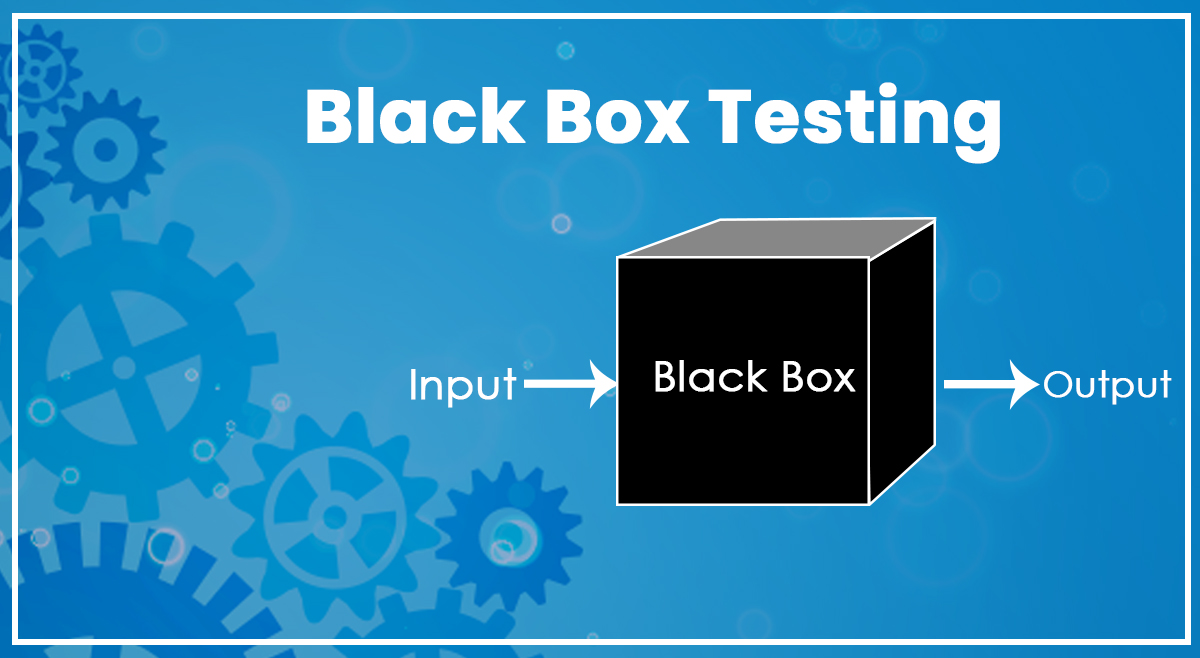
What is Black Box Testing? | Types & Techniques
Even though you might think calling your work average is criticism, it is not always that case. Some people are paid to test works. Such people are referred to as Testers. Their main task is to run and test different software applications. Even though it sounds simple, testing can be so stressful at times. To simplify things, you have to know about the three types of testing. They are Black Box Testing, gray box testing, and white box testing.
If you want to test how a software functions without checking the code, you should carry out a Black Box Testing. You just have to study the principles and requirements of the particular software you want to test. Specifications are equally important as well. As you focus on the input of the software, you should focus on the output too.
What Does Black Box Testing Mean?
Another name people use for Black Box Testing is opaque testing. There are different types of software testing available. Some of them are behavioral testing and closed-box testing. Whenever you need to find out information about a specific subject, all you have to do is type out the subject and click on search. Even without viewing any internal structure, you will get a result. This is exactly how Black Box Testing operates.
How To Carry Out Black Box Testing
To carry out Black Box Testing successfully, you have to follow the steps listed below
- You have to study the specific application you want to test. Ensure you figure out the specifications and requirements of the applications. You should also make sure that you maintain everything included in the software requirement specification.
- As you study the inputs, you should also study the test scenarios. Then proceed to use a technique that is effective and time-saving.
- Test cases are made. The test cases are made to have a maximum input range.
- Work is done on the test cases to get an output. To understand a good result, comparisons are made between the generated and expected output.
- Whenever unsuccessful steps are detected, the software development companies team works on fixing them.
- All defects detected are properly fixed
- To confirm everything you have done, you should run the tests for a second time.
Types of Black Box Testing
Black Box Testing can be classified into three different types. They are well explained below
1. Functional Testing
Whenever tests are made on a single feature of the software, it is referred to as black-box testing. In a case where the right pin is used, money can be easily transferred. On the other hand, a transaction will fail if a wrong pin is used. Common examples of functional testing are unit testing, Integration testing, smoke testing, and the likes.
2. Non-functional Testing
In a case where you use Black Box Testing to work on aspects larger than its functionality, it can be categorized as non-functional testing. With the use of non-functional testing, you can easily find out how a system works. Other things you can identify from non-functional testing are explained below
- If work can still be done when the load is at its highest
- If it can work with other devices
- Ease of use
3. Regression Testing
If you insert new codes into a software program, you have to carry out regression testing. This test will help you check if the new codes you inserted are not affecting other areas of your program. While carrying out regression testing, specific parts of test cases will be taken. Only parts that have been previously executed can be selected.
This method is used to check for abnormalities in functionalities. In other words, testing is made to ensure the new codes don’t affect the old ones. There are a lot of tools used for regression testing. Some of them are Selenium, rational functional tester, and the likes.
Black Box Testing Techniques
1. Equivalence Partitioning
Just as the name implies, inputs are classified into different groups. These groups can also be referred to as partitions. To get the result, input is taken from each group. As inputs can be made to be numeric values, they can also be made to be Boolean conditions or other values.
In a case where a field takes integers within the value of 1 to 20, the valid class partition applies to “1 to 20 inclusive”. On the other hand, any number less than 1 or greater than 20 will be referred to as an invalid class partition. The same thing applies to decimal numbers and non-numeric characters.
2. Boundary Value Testing
When you carry out a boundary value analysis, you will obtain results between specific boundaries. The conditions considered to be boundary value testing are two ends, outer limits and the likes. In a case where you get an offer for customers that are within the age of 18 to 20, such an offer will be considered valid. Tests can be made on other values to know if their inputs are taken.
3. Decision Table Testing
If you get results under specific conditions, such testing can be referred to as decision table testing. If different conditions are joined together, rules will be made. As outputs of such rules are obtained, test cases will be properly structured. For instance, different schemes are given to citizens of different ages. No matter if they are minors, teens or retired, different schemes are available to them.
4. State Transition Testing
In a case where different responses are gotten from transitioning between states, state transition testing is applied. For instance, an account will be locked after a particular number of unsuccessful attempts to log in. In that case, a transition is made from the available state to another state. The other state will involve locking the account.
5. Error Guessing
With the error guessing technique, errors to remain in a specific application can be guessed. When it comes to detecting faults, it can be more effective than systematic techniques. The majority of the time, the error guessing method depends on the experience of testers. The foresight to guess where the next defects will happen is useful in the method.
Benefits of Black Box Testing
The main advantages of Black Box Testing are listed below:
- It is arguably the best choice for functional testing
- By carrying out different Black Box Testing, you can create test cases
- It helps to implement applications easily
- As a tester, you don’t need to be a programmer
- Since the designer and tester don’t operate together, the testing is unbiased
- Even if you don’t have much technical knowledge, you can still implement Black Box Testing
- In case your specifications contain certain ambiguities, you can identify them by using Black Box Testing
Disadvantages of Black Box Testing
Almost everything with a positive side has a negative side. In other words, things that have advantages also have certain disadvantages. The same thing applies to Black Box Testing. The main disadvantages of Black Box Testing are listed below
- In a case where there are too many test inputs, it might take too long.
- There is a chance that no good result will be gotten at the end
- Since testing can take a lot of time, some aspects of the software are not tested
- Specifications are crucial to Black Box Testing. That makes it difficult to get tests cases without the right specifications
- Black Box Testing is not recommended for use in complicated software.
Black Box Testing Tools
Different types of Black Box Testing require the use of different tools. Some of the tools are listed below
- Functional and regression tests: QTP and Selenium
- Nonfunctional tests: LoadRunner and Jmeter
SDLC and Black Box Testing
The life cycle of Black Box Testing is referred to as the Software Testing life cycle (STLC). It has almost the same stages as the software development life cycle (SDLC). The stages are explained below
- Requirement: It is the first stage in SDLC. It is the stage where a requirement will be determined. Software testers are part of the people involved in this stage
- Test Planning: To determine the testing type to use, the project to be worked on will be considered. The test plan doesn’t only determine the risk identified with projects. It also determines mitigation
- Design: Software requirement documents are used to make test cases.
- Test execution: This step involves the execution of test cases. In case there are bugs, they are fixed at this stage. Re-testing is also carried out.
Frequently Asked Questions
What does Black Box Testing mean?
If you carry out testing without knowing much about the internal system, such a test is referred to as Black Box Testing. As inputs are given in the tests, outputs are brought out.
Can functional testing be classified as a type of Black Box Testing?
Functional testing is a type of Black Box Testing that is more focused on application functions. As input is given in functional testing, an output is generated. Comparisons are made between the generated output and expected results.

















 Whatsapp
Whatsapp
 Email
Email


